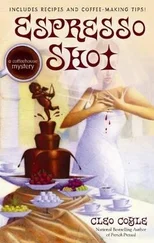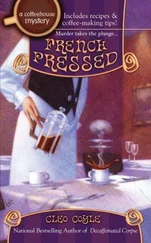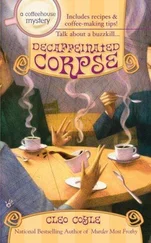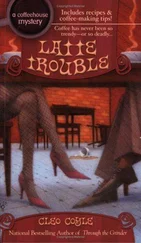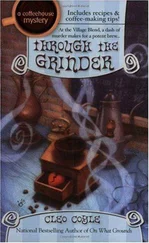Although the firefighters of New York City use plenty of specialized equipment in the course of their hazardous and heroic work, including personal escape ropes, the spike device in this novel is not one of them. As mentioned in the acknowledgments, however, a very real incident did inspire the creation of this plotline.
On January 23, 2005 (a day known in the FDNY as “Black Sunday”), two members of the department lost their lives in the line of duty — and four more were very badly injured — because they did not have escape ropes. After that terrible day, the FDNY changed its policies and now provides high-heat resistant ropes to their firefighters.
This true, tragic incident left a lasting impression on me and my husband as we began to consider how the life and death of any firefighter may hinge on something as simple as possessing a single piece of reliable equipment.
Like the spike device we invented, the charity in this book is a fictional creation, but there is a very real firefighters’ charity that I’m pleased to tell you about right now.
The Terry Farrell Firefighters Fund is a nonprofit organization dedicated to providing firefighters and their families with financial assistance for their educational, medical, and equipment needs. This charity was formed in honor of Terry Farrell, a decorated firefighter with FDNY Rescue 4 who perished on September 11, 2001, while fighting fires and rescuing victims at the World Trade Center.
Originally based in New York, this charity is currently expanding with chapters in other areas of the country. To find out more about the Terry Farrell Firefighters Fund, including how you can help simply by buying a specially labeled bottle of Jim Beam bourbon or purchasing a California Firehouse Cookbook , visit the fund’s Web site at www.terryfarrellfund.org
Recipes & Tips from The Village Blend
Visit Cleo Coyle’s virtual Village Blend at www.CoffeehouseMystery.com for coffee tips, coffee talk, and the following bonus recipes:
* Crunchy-Sweet Italian Bow Tie Cookies
* St. Joseph’s Day Zeppoles
* Brutti Ma Buoni (“Ugly but Good”) Italian Cookies
* “Malfatti” (ravioli filling without the dough)
* Dutch Baby Pancake (Bismark)
* Honey-Glazed Peach Crostata with Ginger-Infused Whipped Cream
* Mini Italian-Style Coffeehouse Cakes (with Coffeehouse-Inspired Glazes)
* Pistachio Muffins
* “Stuck on You” Linzer Hearts
* Three-Alarm Buffalo Wings with Extinguisher Gorgonzola Dip
* Puerto Rican-Style Pernil (Pork Shoulder)
And more...
Guide to Roasting Coffee
COFFEEroasting is the culinary art of applying heat to green coffee beans in order to develop their flavor before grinding and brewing. The entire process is highly complex, but this brief guide should give you a helpful overview — as well as something to consider the next time you sit down to enjoy a cup of joe.
Factors of flavor:According to food chemists, roasted coffee has one of the most complicated flavor profiles of all foods and beverages with over eight hundred substances contributing. Many factors influence the taste of the coffee you drink. Coffee beans grown in different microclimates of the world, for example, will display vastly different characteristics with flavors that may range from deep notes of chocolate to bright overtones of lemon.
Botany also plays a role. Coffee comes from a plant (genus Coffea ) with ninety different species. Only two of those species ( Coffea arabica and Coffea robusta ) are primarily grown as cash crops, but different varietals (or cultivars) within those species are cultivated all over the world. Kona, Geisha, Blue Mountain, and Bourbon are just four examples of the many Arabica varietals.
Finally, the journey coffee takes from the seed to your cup will also influence its flavor. Let’s begin our coffee trek with...
The coffee cherry:Your cup of joe begins its life as a seed or pit within the fruit or “cherry” on a coffee plant. (The coffee plant is often called a tree but is really a shrub.) The cherries on the coffee plant will ripen from green to yellow to red. They are then picked, either by hand or machine.
The coffee bean:Each coffee cherry contains two green coffee beans, which grow with their flat sides facing each other. The exception is the coffee cherry that contains a “peaberry,” which is a single, rounded seed. (The peaberry is rarer and for a variety or reasons considered to be of better quality than regular coffee beans.) Once coffee is picked, it must be “processed” as soon as possible to prevent spoilage.
Processing:Most coffee drinkers never consider this un-glamorous step in the seed-to-cup journey, but how coffee is processed can greatly affect its final flavor. Before the hard green coffee beans can be roasted (which will turn them brown), they must be extracted from the skin and pulp (or flesh) of the fruit surrounding them. This is usually done by a dry, wet, or semidry processing method.
Dry, natural, or unwashed processing:This method of processing coffee is the oldest and is still used in many countries where water resources are limited. After the cherries are picked, they are spread out to dry in the sun for several weeks. The outer layer of dried skin and pulp is then stripped away, usually by machine. This method is used in Ethiopia, Brazil, Haiti, Paraguay, India, and Ecuador. Because these beans are dried while still in contact with the coffee fruit, they tend to have more exotic flavor profiles than wet processed coffee. They often display more fruity or floral characteristics, for example, and are heavier in body.
Wet or washed processing:Special equipment and large quantities of water are needed to execute this processing method, which gradually strips away the layers of soft fruit that surround the hard coffee beans. The beans are then dried in the sun or machine dried in large tumblers. This processing method, used in major Latin American coffee-growing countries (except Brazil), produces more consistent, cleaner, and brighter flavored coffees than the dry method.
Semidry or pulped processing:This method is a kind of combo of both. Water is used to remove the skin of the fruit but not the pulp (or flesh), which is left on and allowed to dry on the bean. After it is dried, the pulp is removed by machine. This method, which is used in Brazil and (a variation of it) in Indonesia, produces coffee that has the fruity and floral notes of dry processing with the clarity of wet processing.
Home roasting:After green coffee is fully processed, it is ready for roasting. Until the early twentieth century, coffee was primarily roasted in the home, over fires or on stoves, using pans or a hand-turned drum appliance. In the eighteenth, nineteenth, and early twentieth centuries, stores and cafés also used small “shop roasters” (also called micro-roasters) to roast fresh coffee for their customers.
As the twentieth century progressed, however, coffee roasting became a major commercial endeavor. Preground, packaged coffee roasted in factories overwhelmed the market. Home roasting disappeared along with most small shop roasters until late in the twentieth century when coffee drinkers rediscovered the superior quality of freshly roasted coffee. Now the United States and other industrialized countries are enjoying a Renaissance of “small batch” or “boutique” roasting.
These days, a variety of small appliances are available that allow you to roast your own green coffee at home. To learn more, visit the Sweet Maria Web site, which sells home roasting equipment, green beans, and includes information for the home roasting enthusiast: www.sweetmarias.com. Kenneth Davids’s excellent book Home Coffee Roasting is another great resource.
Читать дальше





